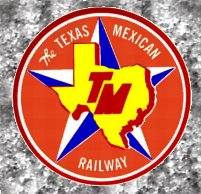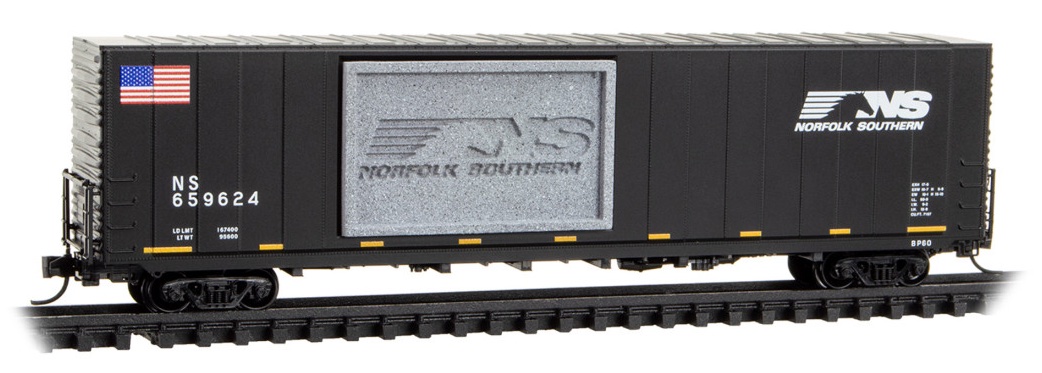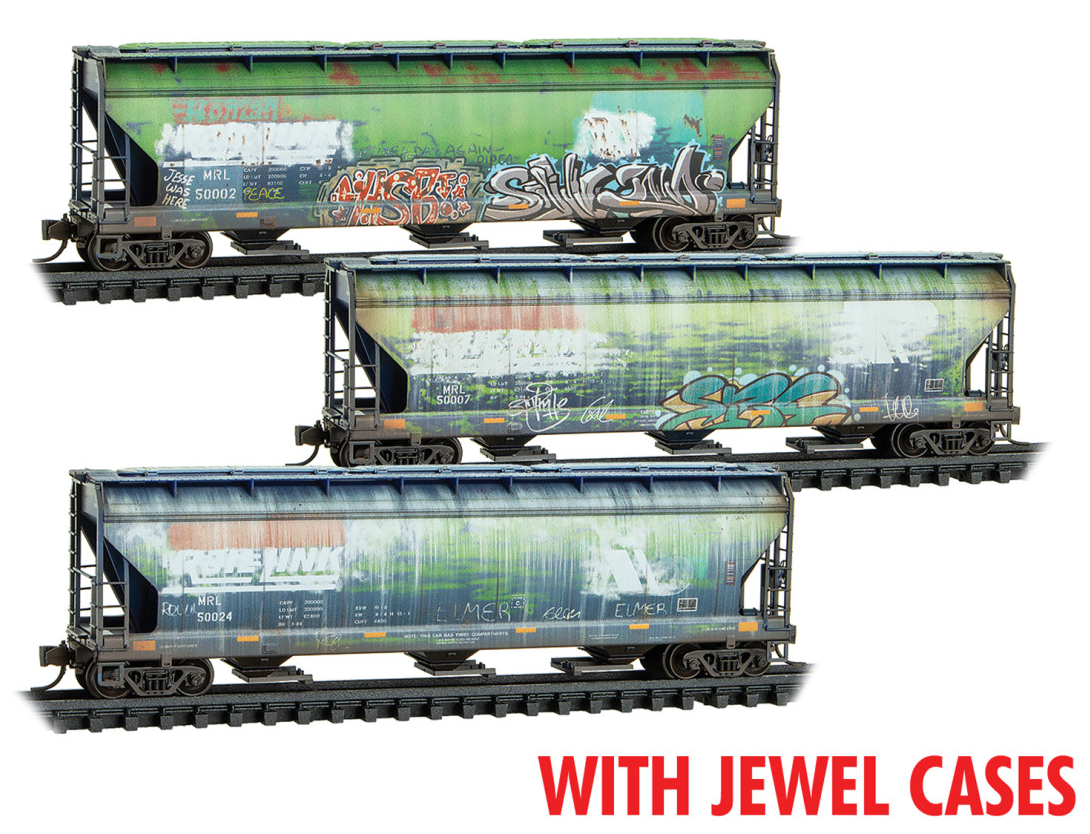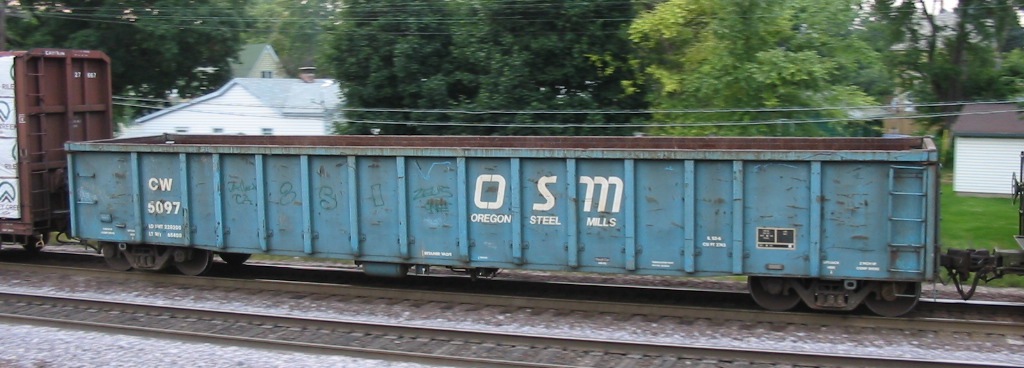Specific Item Information: Built in the 1980s, this gondola was employed on the Texas Mexican Railway. The Texas Mexican was a short line in the United States that operated from 1875 until 2005 between Corpus Christi and Laredo, Texas. In 2005, KCS absorbed the remnants of the TM.
Car features prototypical inspired weathering and graffiti.
Prototype History: In US railroad terminology, a gondola is an open-topped rail vehicle used for transporting loose bulk materials. Because of their low side walls, gondolas are also suitable for the carriage of such high-density cargoes as steel plates, steel coils, and bulky items such as prefabricated sections of rail track. For weather-sensitive loads, these gondolas are often equipped with covers.
All-steel gondolas date back to the early part of the 20th century. However, most of the early ones were shorter and used 40' designs. The ubiquitous 50' steel gondola we see modeled so often today are typical of railcars produced since the end of the second world war. In the late 1940s, steel became once again readily available and new, longer gondolas were produced to transport material for America's booming economy. Generally, these 50 foot cars have a capacity of 70 tons and were actually 52'6" long. The first models of this design were produced by the Erie Railroad and the Greenville Steel Car Co, but nearly identical cars were produced by Pullman, ACF and Bethlehem.
All-steel gondolas date back to the early part of the 20th century. However, most of the early ones were shorter and used 40' designs. The ubiquitous 50' steel gondola we see modeled so often today are typical of railcars produced since the end of the second world war. In the late 1940s, steel became once again readily available and new, longer gondolas were produced to transport material for America's booming economy. Generally, these 50 foot cars have a capacity of 70 tons and were actually 52'6" long. The first models of this design were produced by the Erie Railroad and the Greenville Steel Car Co, but nearly identical cars were produced by Pullman, ACF and Bethlehem.
Road Name History: The Texas Mexican name first appeared in 1881 during a reorganization of a previous three foot gauge line linking the Gulf port of Corpus Christi, Texas and the city of Loredo on the Mexican border. The line was 157 miles long putting it between Spokane International and Duluth Winnipeg & Pacific in relative size. The TM was standard-gauged in 1902.
Since 1900, TM was owned by the Mexican government through a trust administered in New York. The TM acted as a funnel for traffic to and from Mexico, in fact the end of the line was half way across a bridge over the Rio Grande west of Loredo. The bridge, which was completed in 1883 was the first direct railroad connection between the U.S.A. and another country (the first connection to Canada that didn’t involve a ferry followed six years later!)
TM completely dieselized in 1939 with a fleet of 7 Whitcomb boxcabs. These strange little diesels had four axels set in a rigid frame. That sounds a little, well rigid, by diesel standards but think of it as a diesel powered 0-8-0. A few years later, TM built a few diesels themselves with 4 powered axels in a rigid frame plus a pair of un-powered leading wheels – essentially a diesel 2-8-0. They even built another diesel from an old baggage car.
TM did go on to buy more sensible locomotives including Baldwin switchers, EMD F7’s, and 7, 9, 18, 28, and 38 series geeps. By the 1980’s, there were 16 various geeps on the roster. For a while in the 1980s, TM provided passenger service under the name TexMex Express between Corpus Christi and Loredo with some success.
In 1982, the Mexican government sold their stake in TM to a Mexican company. As the privatization of the Mexican National Railways (FNM) loomed, Kansas City Southern was assembling a system to take advantage of new traffic moving north and south due to the passage of the NAFTA treaty. KCS was positioning itself to acquire a large stake in the “Northeast Concession” (that would become TFM) in the privatization of FNM. Over a period of several years, shares in Texas Mexican were traded back and forth between KCS and companies in Mexico. KCS officially took control of TM in 2005 when they also purchased all remaining shares of TFM. That left a gap between Corpus Christi and the end of the KCS at Beaumont, Texas. KCS had already leveraged trackage rights over Union Pacific to bridge that gap in exchange for not fighting UP’s acquisition of Southern Pacific. Today, TM is a wholly owned subsidiary of KCS and operations are largely integrated into those of KCS.
Since 1900, TM was owned by the Mexican government through a trust administered in New York. The TM acted as a funnel for traffic to and from Mexico, in fact the end of the line was half way across a bridge over the Rio Grande west of Loredo. The bridge, which was completed in 1883 was the first direct railroad connection between the U.S.A. and another country (the first connection to Canada that didn’t involve a ferry followed six years later!)
TM completely dieselized in 1939 with a fleet of 7 Whitcomb boxcabs. These strange little diesels had four axels set in a rigid frame. That sounds a little, well rigid, by diesel standards but think of it as a diesel powered 0-8-0. A few years later, TM built a few diesels themselves with 4 powered axels in a rigid frame plus a pair of un-powered leading wheels – essentially a diesel 2-8-0. They even built another diesel from an old baggage car.
TM did go on to buy more sensible locomotives including Baldwin switchers, EMD F7’s, and 7, 9, 18, 28, and 38 series geeps. By the 1980’s, there were 16 various geeps on the roster. For a while in the 1980s, TM provided passenger service under the name TexMex Express between Corpus Christi and Loredo with some success.
In 1982, the Mexican government sold their stake in TM to a Mexican company. As the privatization of the Mexican National Railways (FNM) loomed, Kansas City Southern was assembling a system to take advantage of new traffic moving north and south due to the passage of the NAFTA treaty. KCS was positioning itself to acquire a large stake in the “Northeast Concession” (that would become TFM) in the privatization of FNM. Over a period of several years, shares in Texas Mexican were traded back and forth between KCS and companies in Mexico. KCS officially took control of TM in 2005 when they also purchased all remaining shares of TFM. That left a gap between Corpus Christi and the end of the KCS at Beaumont, Texas. KCS had already leveraged trackage rights over Union Pacific to bridge that gap in exchange for not fighting UP’s acquisition of Southern Pacific. Today, TM is a wholly owned subsidiary of KCS and operations are largely integrated into those of KCS.
Brand/Importer Information: Micro-Trains is the brand name used by both Kadee Quality Products and Micro-Trains Line. For a history of the relationship between the brand and the two companies, please consult our Micro-Trains Collector's Guide.
Manufacturer Information:  Micro-Trains Line split off from Kadee Quality Products in 1990. Kadee Quality Products originally got involved in N-Scale by producing a scaled-down version of their successful HO Magne-Matic knuckle coupler system. This coupler was superior to the ubiquitous 'Rapido' style coupler due to two primary factors: superior realistic appearance and the ability to automatically uncouple when stopped over a magnet embedded in a section of track. The success of these couplers in N-Scale quickly translated to the production of trucks, wheels and in 1972 a release of ready-to-run box cars.
Micro-Trains Line split off from Kadee Quality Products in 1990. Kadee Quality Products originally got involved in N-Scale by producing a scaled-down version of their successful HO Magne-Matic knuckle coupler system. This coupler was superior to the ubiquitous 'Rapido' style coupler due to two primary factors: superior realistic appearance and the ability to automatically uncouple when stopped over a magnet embedded in a section of track. The success of these couplers in N-Scale quickly translated to the production of trucks, wheels and in 1972 a release of ready-to-run box cars.
Micro-Trains Line Co. split off from Kadee in 1990 to form a completely independent company. For this reason, products from this company can appear with labels from both enterprises. Due to the nature of production idiosyncrasies and various random factors, the rolling stock from Micro-Trains can have all sorts of interesting variations in both their packaging as well as the products themselves. When acquiring an MTL product it is very important to understand these important production variations that can greatly enhance (or decrease) the value of your purchase.
Please consult our Micro-Trains Collector's Guide

Micro-Trains Line Co. split off from Kadee in 1990 to form a completely independent company. For this reason, products from this company can appear with labels from both enterprises. Due to the nature of production idiosyncrasies and various random factors, the rolling stock from Micro-Trains can have all sorts of interesting variations in both their packaging as well as the products themselves. When acquiring an MTL product it is very important to understand these important production variations that can greatly enhance (or decrease) the value of your purchase.
Please consult our Micro-Trains Collector's Guide
Item created by: grothe77 on 2024-08-16 13:25:47. Last edited by grothe77 on 2024-08-16 13:28:51
If you see errors or missing data in this entry, please feel free to log in and edit it. Anyone with a Gmail account can log in instantly.
If you see errors or missing data in this entry, please feel free to log in and edit it. Anyone with a Gmail account can log in instantly.











